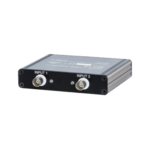Theory and Standards
Would you like to familiarize yourself with the basic concepts of piezoelectric vibration measurement technology? By means of the provided information you will be able to select, mount and connect a vibration transducer. If you do not yet have any experience with piezoelectric vibration transducers, we recommend reading these pages in sequence as a learning course.
1. Introduction
What is the purpose of vibration sensors?
Movements occur in many areas of our lives:
The car is rolling, a compressor is working, a machine tool is grinding, an excavator is digging a pit, aircraft engines are turning, conveyor belts and grippers are transporting packages, I live on a busy street. All movements generate vibrations and shocks intentionally, unintentionally as a side effect or also through wear. Often they are disturbing, if only they are big enough: The car rumbles, the compressor vibrates, the machined parts become imprecise and rough, the excavator operator is jolted, an engine fails or even breaks down, packages and their contents are damaged, the glasses in the cupboard clink when a truck passes.
All disturbances have in common that the cause is vibrations and shocks. If these are measured continuously or on a rotational basis, incorrect function, wear and damage are detected and can be repaired.
What is measured?
The commonly used quantity for the measurement of vibration is acceleration. It has the Standard International unit m/s² (meters per second squared). Sometimes also the non-SI unit gravitational acceleration (g) is used for acceleration. 1g is about 9.81 m/s².
For some applications, for example in machine monitoring, vibration velocity (mm/s) or vibration displacement (µm, mm) are measured. Velocity can be derived from acceleration by single integration, displacement by double integration. Integrators can be implemented by an analog circuit or a software routine.
While we have an idea of the order of magnitudes of displacement and velocity, it may be difficult to imagine acceleration:
- Accelerations below 0.001 m/s² are measured in seismic surveys.
- Mean acceleration of an ICE 3 high speed train is 0.5 m/s².
- A sprinter reaches a start acceleration of up to 4 m/s².
- A racing car driver can experience 50 m/s². Most humans lose consciousness at around 60 m/s².
- A Saturn V rocket reaches at flameout of the first stage up to 40 m/s².
- A car accident of 100 m/s² will break human bones while 300 m/s² are sufficient for a seat belt to break ribs. 1000 m/s² are the deadly limit for most humans. 1000 m/s² are deadly for most humans.
- A jumping flea may reach 3200 m/s².
- A laptop computer dropping onto a concrete floor from a height of 1 m may endure as much as 20,000 m/s².
- The needle of a sewing machine may reach 60,000 m/s².
- Accelerations beyond 100,000 m/s² are found in ballistics and explosion tests.
Why Piezoelectric Sensors?
The accelerometers Metra has been manufacturing for over 60 years utilize the phenomenon of piezoelectricity. “Piezo” is from the Greek word meaning to squeeze. When a piezoelectric material is stressed it produces electrical charge. Combined with a seismic mass it can generate an electric charge signal proportional to vibration acceleration.
The active element of Metra’s accelerometers consists of a carefully selected ceramic material. We use Lead-Zirconate Titanate (PZT) with excellent piezoelectric properties. Specially formulated PZT provides stable performance and long-term stability. High stability similar to quartz accelerometers is achieved by means of an artificial aging process of the piezoceramic sensing element. The sensitivity of ceramics compared to quartz materials is about 100 times higher. Therefore, piezoceramic accelerometers are the better choice at low frequencies and low acceleration.
Piezoelectric accelerometers are widely accepted as the best choice for measuring absolute vibration. Compared to the other types of sensors, piezoelectric accelerometers have important advantages:
- Extremely wide dynamic range almost free of noise – suitable for shock measurement as well as for almost imperceptible vibration
- Excellent linearity over their dynamic range
- Wide frequency range, high frequencies can be measured
- Compact yet highly sensitive
- No moving parts – no wear
- Self-generating – no external power required
- Great variety of models available for nearly any purpose
- Integration of the output signal provides velocity and displacement
The following table shows other common types of vibration sensors compared to piezoelectric accelerometers:
| Sensor type | Advantage | Disadvantage |
| Piezoresistive | Measures static acceleration | Limited resolution by resistor noise Only for low and medium frequencies Power supply needed |
| Electrodynamic | Only for low frequences Large size | |
| Capacitive (MEMS) | Measures statc acceleration, suited as tllt sensor Cheap manufacturing with semiconductor technology | Low resolution More fragile Only for low frequencies |
Which Instrumentation?
The piezoelectric principle requires no external energy. The signal energy measured at the output of the sensing element is generated fom the acceleration energy. Only alternating acceleration can be measured. This type of accelerometers is not capable of a true DC response, e.g. gravitation acceleration.
The high impedance sensor output needs to be converted into a low impedance signal first. In the case of IEPE compatible transducers this is the task of the built-in electronics. This electronic circuit is powered from the connected instrument. Suitable products can be foundon the page Signal Conditioning . For sensors with charge output, an external charge amplifier is required.
For processing the sensor signal, a variety of equipment can be used. Common are, such as:
- Time domain equipment, e.g. RMS and peak value meters
- Single or double integration for the formation of velocity or displacement
- Application of filtering, frequency weighting, FFT and cross correlation

 Signal Conditioners
Signal Conditioners Vibration Meters
Vibration Meters Vibration Calibrators
Vibration Calibrators
 Human Vibration
Human Vibration Building Vibration
Building Vibration PC Data Acquisition
PC Data Acquisition Cables and accessories
Cables and accessories